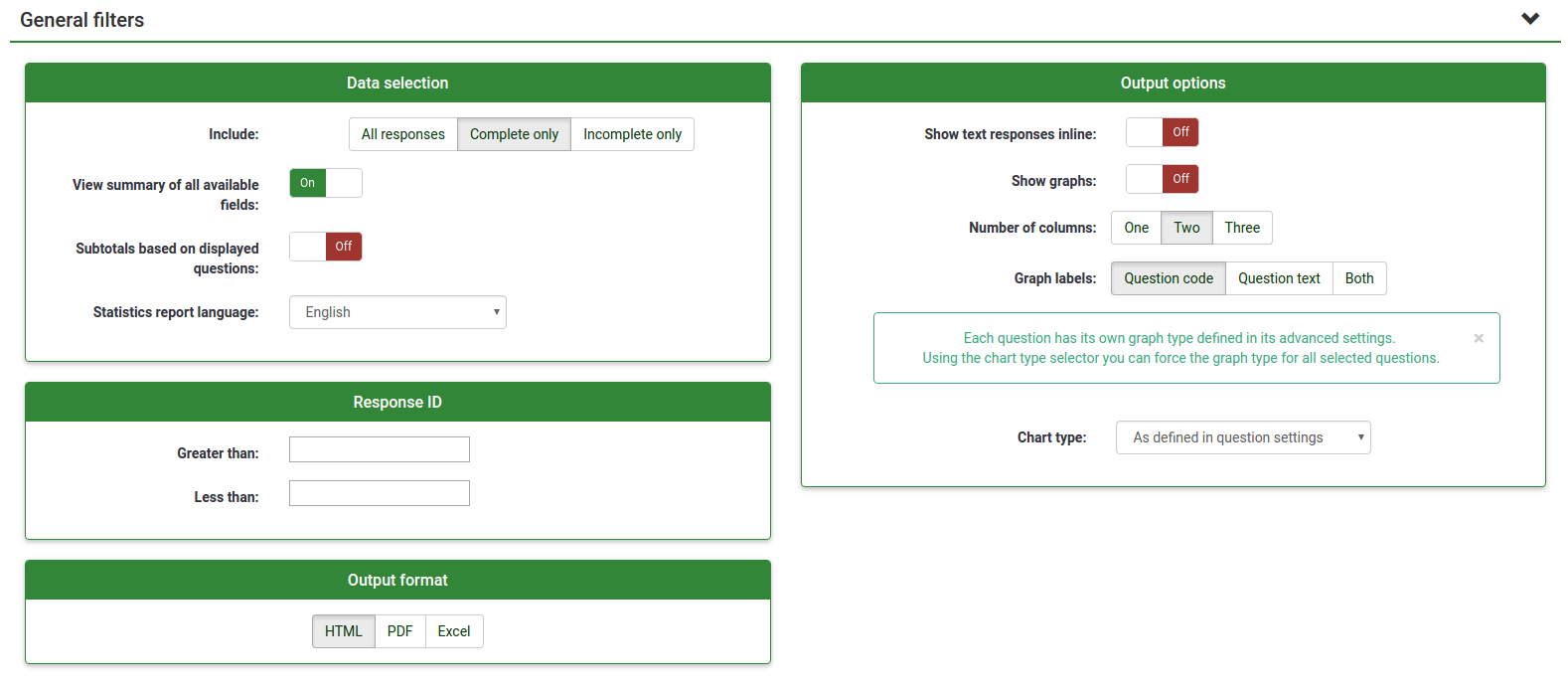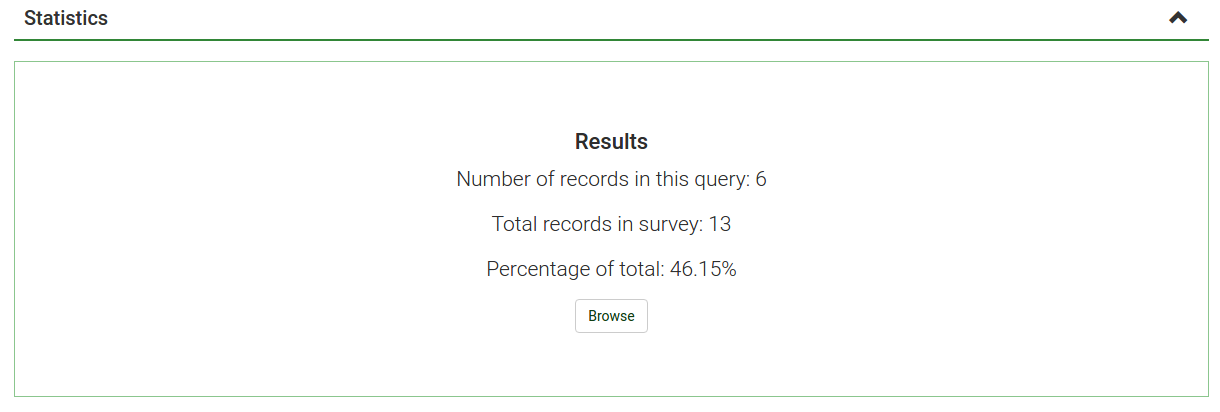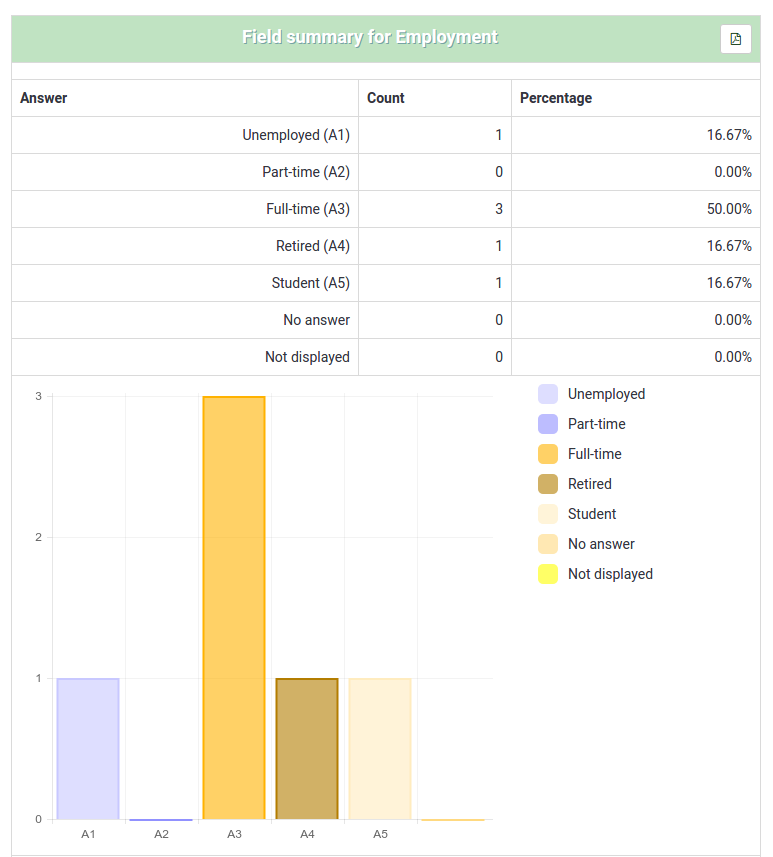Statistics: Difference between revisions
From LimeSurvey Manual
(Marked this version for translation) |
mNo edit summary |
||
| Line 6: | Line 6: | ||
<!--T:43--> | <!--T:43--> | ||
The statistics feature is available from the survey toolbar by clicking first on the [[File:browse.png]] 'Response and Statistics' | The statistics feature is available from the survey toolbar by clicking first on the [[File:browse.png]] 'Response and Statistics' menu entry in then last drop-down menu (which is only available if a survey has been activated) and then click the [[File:statistics.png]] statistics button. | ||
=What is the statistics feature?= <!--T:4--> | =What is the statistics feature?= <!--T:4--> | ||
Revision as of 11:34, 16 June 2017
General
The statistics feature is available from the survey toolbar by clicking first on the File:Browse.png 'Response and Statistics' menu entry in then last drop-down menu (which is only available if a survey has been activated) and then click the  statistics button.
statistics button.
What is the statistics feature?
Let's say you've got a survey running, or it is finished and you want to start analyzing the results. LimeSurvey can dump all the results into an Excel spreadsheet (or CSV file, or Microsoft Word file). You can do whatever takes your fancy with the data then. Alternatively you can use the statistics feature to have a look at your data and start getting some useful information from it.
The statistics feature allows you to 'filter' your data and retrieve numbers and summaries of different fields from it. The statistics script doesn't attempt to do highly complex filtering - but you'd be surprised at the sort of information that can be easily obtained.
Viewing Results and Field Summaries
When you click the "Get statistics" button you will be presented with a list of all available questions. For each question there is a checkbox that can be selected in order to show a summary of this table, and an icon that when clicked (or if the mouse hovers over it) will give you the full text of the question. To view the results for a question or questions, check the checkbox(es) at the top of the question(s) and then click "View stats". Alternatively to view the results for all available questions, check the "View summary of all available fields" box at the very top and then click "View stats".
You will then be given a "Results" table which will indicate the number of cases and a "Field Summary" table for each question selected which will summarize all possible answers in the question(s), their totals and their percentage.
Filtering data
Data can be filtered in several ways:
- By survey completion - use the dropdown at the top to select Completed, Incomplete or All records. For a discussion on incomplete responses see Browsing survey results.
- By ID - use the inputs to filter by ID number
- By response - click on one or more responses in the list under each question to filter the data by those responses (use CTRL/click to select multiple responses in the same question). Note that if you choose to view summary of all available fields (checkbox at top) you will need to select your response filters before checking that box.
- By text - You can search the responses to a free text question type (and similar types) by entering a text. If you want to search for a partial string you can use the percentage sign (%) as wildcard. Example: If you look for 'Tom%' it will find entries with 'Tomb' and 'Tommy', etc.
Selecting "View stats" will then give you the "Results" table, indicating the number of responses matching your criteria, and a "Field Summary" table for each question selected which will summarize all possible answers in the question(s), their totals and their percentage. It is important to note that these results are a subset of your total responses. So, for example, if your criteria display 146 records out of a total 180, the summary will show the breakdown of just those 146 records for that table.
The images below indicate that I have elected to view the stats for "Employment status" of completed records/female/age 18-25. This gives me the results for 6 out of 13 records.
Things to be cautious of
- If you set criteria on the same question that you ask for a summary, then that question will only present answers matching your criteria. So it is good practice not to set any criteria on the same question you are getting a summary of.
- To select multiple entries for a question hold down the CTRL button when clicking. To 'unselect' the last criteria (if you want to clear all criteria from a question) click on the last highlighted answer with the CTRL button.
Browsing / Exporting filtered results
If you want to export the responses that match your criteria, click on the "export" button at the bottom of the 'Results' table. This will bring up the usual export screen, however when you export the results you will only receive the responses that match your criteria. Similarly, click on browse to view the matching responses in the browse screen.
Graphs
For charting the library pChart is used which is completely included and usually doesn't have to be configured.
However for some languages (like Chinese) the usual font used (Vera) does not cover the needed character set. In that case you can use the setting $chartfontfile to set a new TTF font file in config.php (Check out config-defaults.php for the right setting). For Chinese (Simplified and Traditional) we recommend to use the FireFlySung font which can be downloaded from [1].
After the graphs have been generated you can export these graphs easily. Use a right-mouse-click over the image and choose "Save image as" and save the graph as a .png-file to your chosen location. Normally all results are displayed as pie charts - only for question type "Multiple Options" bar graphs are used.
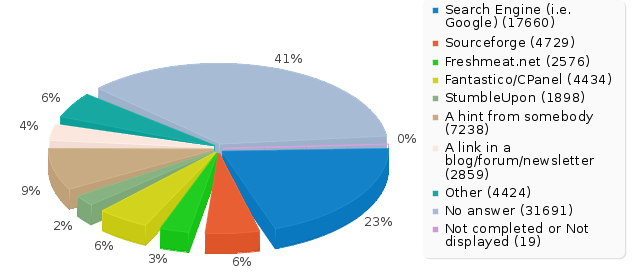
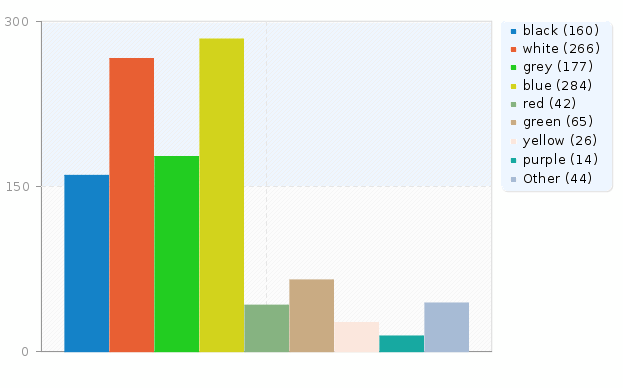
"incomplete responses", "no answers" and not "completed/not displayed" counts
"incomplete responses" counts: all responses that started, but weren't completed. A response started when the participant clicked "Next" button in the survey, but did not click the "Submit" button in the end.
Technically speaking, this is when there is no SubmitDate in the response table for this entry, but new data set was created already.
A question with "no answer" counts: when the question was displayed, but the participant hasn't given an answer.
Technically speaking, this is when the question is not mandatory, was displayed, received no answer and the user clicked Next or Submit: the consequence is that the database field for this answer is set to "" (empty string). This "no answer" status cannot be really computed for Date or pure Numerical questions where the database field cannot record a string.
A question with "not completed/not displayed" counts: when the page containing the question was not displayed. This can be because of conditions, or just because the participant left the survey before this page was displayed (or just while this page is displayed, but without clicking the Next button).
Technically speaking, the database field for this question is filled with a NULL value.
Public Statistics
LimeSurvey includes functionality to display simple statistics to the general public or to your participants after they have completed filling out an online survey.
There are two steps involved in activating and displaying statistics to your participants. Firstly you must enable public statistics for your survey (by default this is turned off). This setting is in your main survey toolbar, General Settings – in the Presentation and Navigation Tab. Look for the setting "Public Statistics". There is also a setting here called "Show graphs in public statistics" which – if turned on – will show graphs as well as the counts (by default only numerical statistics are displayed).
Once you’ve set your survey to display statistics, you need to indicate question-by-question which statistics are displayed to your participants. By default, no questions are selected for display.
You choose which questions will be shown in the public statistics page by editing each question. In the Advanced Settings for each question is an option "Show in public statistics". Once you set this advanced setting to "Yes" the question will be included on the public statistics page.
What participants see
Once you’ve enabled public statistics, and selected some questions to display, an additional option will be visible to participants when they’ve completed filling out your survey. In addition to the usual thank you, there will be a link to "View the statistics for this survey"
If your participants click on this link they will be able to see a page detailing the responses to the questions you’ve selected, and a graph (if you chose to display graphs too).
Changing the look of the public statistics page
The looks of the public statistics page can be modified via template.css (search for "#statsContainer"). However, there is currently no template of it’s own that can be edited in the limesurvey template editor.
